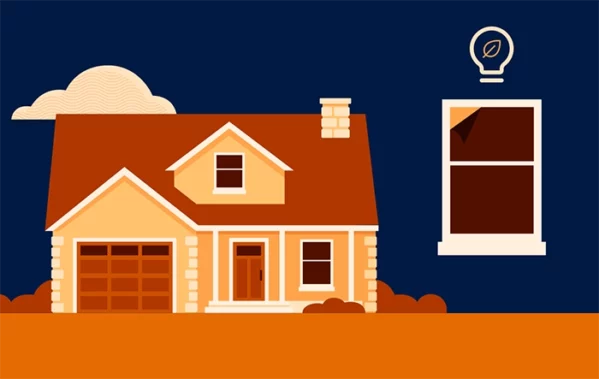Economic and industry news or trends
Why healthy home building is more important than ever
What does it mean to build a healthy home?
Even before the onset of the coronavirus pandemic, healthy home building was becoming a growing trend. From radon mitigation to better ventilation and moisture control, a healthy home environment has never been more important.
To learn more, we reached out to custom home builder and Buildertrend user, Lexar Homes. As homebuilders, they are “committed to building healthy homes for healthy living.” Daimon Doyle, product development manager at Lexar Homes, answered our questions and provided insight into what it really means to create healthy living environments for their clients.

What is the difference between high performance, energy efficient and healthy home building?
Most green building programs such as Built Green®, National Green Building Standard, Earth Advantage and others recognize that in order for a home to be truly built correctly, it has to exceed typical building standards in these five areas: Energy efficiency, material efficiency, water conservation, indoor environmental quality and proper site selection and preparation. At Lexar, we address all those things and a few more in our high-performance approach by focusing on a product that is comfortable, healthy, efficient, durable and still affordable.
What are some characteristics of healthy home building beyond sustainability?
Traditionally, sustainability in construction focuses mainly on the materials used and their origins for building healthier homes. Using building materials that are quickly renewable while at the same time, sourced locally in order to minimize transportation, minimizes the impact on raw materials and overall carbon output. Oftentimes, those materials can also lend toward a healthy indoor environment, but the two aren’t mutually inclusive. Knowing that people spend a lot of time inside their homes makes designing and using materials that do not negatively impact the indoor environment even more paramount.
What are your processes or guidelines for building healthy homes?
When we think about healthy indoor environments, the primary focus is on maintaining good indoor air quality, i.e. the availability of fresh air and a good ventilation system. The first step there is to eliminate all harmful pollutants from the home. We focus on using low or no-VOC paints and adhesives. Carpets and other floor coverings that are Green Guard certified ensure that the manufacturer’s products have been tested by a third party to ensure they meet a consistent standard of low toxicity.
The next step is to separate the users from the harmful products that can’t be avoided such as the products usually found in one’s garage, often by filtration, and then be sure to ventilate those spaces away from the occupants. A proper whole house ventilation strategy in the living areas is also important to ensure that stale air is removed from the structure and replaced by filtered outdoor air at regular intervals while not compromising heat loss. We often do that with the use of Heat Recovery Ventilators or Energy Recovery Ventilators that capture some of the heat from the air being exhausted and exchange it with the fresh air from outside.
Lastly, and especially in the Northwest, proper moisture management incorporated into our building practices helps ensure that mold doesn’t build up on surfaces or in building cavities.
Why is building healthy homes more important now than ever before?
Over the last several decades, more and more products are entering the market, often from countries that don’t have the same stringent health requirements that exist in the U.S. It is critical that builders know what their materials are made of and where they are sourced from. How many new chemical compounds exist today that didn’t exist 50 years ago? What is it that makes up that “new car smell” anyway? We don’t know the long-term effects of many of these chemicals and compounds. Only as of the last few decades have we quit using things like asbestos, lead paint and formaldehyde products. A home should be a safe environment to spend at least half of your day in safely. Especially with the growing trend of working from home.
In our current environment, are you seeing an increase in requests for things such as good ventilation from homeowners?
Each year, consumers are becoming more aware of the impacts on their health by the environment around them. Be it living in or near a congested city or in a home with materials that would not be allowed to be used today. While ventilation is one strategy for helping to ensure good indoor air quality, it is not alone. Improper ventilation can impose an energy penalty by removing air you paid to properly condition and replacing it with outdoor air that is either too cold or too warm. The motto we use is “build it tight and ventilate it right.” Nearly gone are the days with inexpensive bath fans that were so loud no one ever used them. The products we use today either have occupancy sensors, humidity sensors or both and are leaps and bounds beyond what was available just 15 years ago.
Are there any other insights you’d like to share about the benefits of healthy home building?
We believe that if properly maintained, a home that was built correctly to begin with, should last for many generations. Programs such as the EPA’s Indoor airPLUS provide both guidance and third-party verification for good healthy home practices. With the availability of products, processes and information that exist, there are many ways builders can go well beyond the minimum codes that exist for safety and achieve better performing homes their clients will love. Who wouldn’t want to do that?
Looking for a better way to build and promote healthy homes?
Give us a call! Our team is always here to walk you through the top-notch features and services Buildertrend has to offer. Schedule a demo today and see how we can help transform the way you do business!
Healthy home building FAQs
It can be more expensive but does not have to be. Find a builder who uses sustainable materials – they should already have sustainable material suppliers who offer the building materials at a good price.
The air quality inside your home is one of the most important things to consider when building a healthy home. Other important aspects include moisture management and the local sourcing of renewable materials.
One obvious benefit of building a sustainable, healthy house is a healthier family due to the great air quality and absence of toxic chemicals. Green building leads to a lower carbon footprint, which benefits the environment.

Bathroom design trends in 2024
With life being so fast-paced, bathroom designs are embracing the concept of personal sanctuaries. Here are the latest bathroom design trends for 2024.

How window tinting can increase energy efficiency in new builds
Here are five reasons why home window tinting is becoming an increasingly popular choice for and energy-conscious enhancement on new builds.

The 2024 housing market outlook
In this 2024 construction industry update, Buildertrend’s in-house expert shares insight into the lock-in effect, interest rates and the labor shortage.
Want to contribute to our blog?
We believe in building a community for construction – sharing is a big part of that. If you have industry expertise or a story to tell, your voice can reach thousands here.

